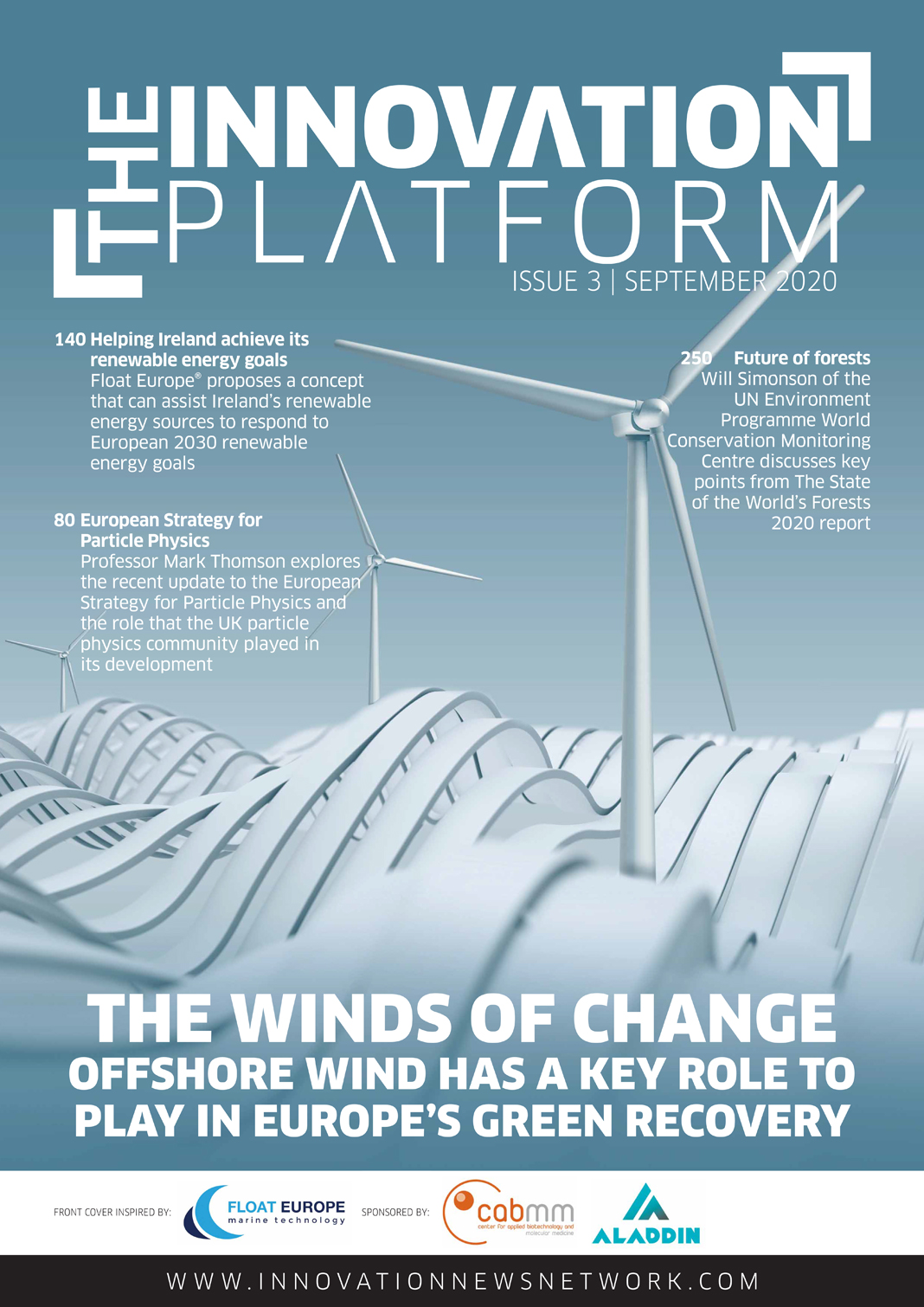The latest issue of The Innovation Platform looks at innovation in the midst of the COVID-19 pandemic and how the science sector has adapted to the changing climate.
Much progress has been made in terms of tackling the effects of COVID-19 since I last introduced this publication three months ago. Travel restrictions, social distancing measures, lockdowns, and shielding the vulnerable segments of the population, in addition to innovative approaches to and utilisations of technologies, has seen a marked decrease in both the number of confirmed coronavirus cases and, moreover, the number of deaths resulting from the disease. At least, in the majority of countries and regions.
And while we await the development of a vaccine, and as Europe – and, indeed, much of the world – begins to ‘recover’, a forward-looking mentality is beginning to develop. Here, we are seeing, as though with fresh eyes, what the world of tomorrow could look like for science sector. This ‘new’ future, many hope, will be one that is greener, more sustainable, and more inclusive; it will support and thus draw on innovation to tackle many of the grand challenges facing society post-COVID-19.
For this to be achieved, the world needs more investment in R&D&I, and, as I have said before, a policy framework that is fit for purpose and which goes some way to bringing the diverse elements that form these solutions together.
It was therefore interesting to see the launch of the European Green Deal and, indeed, the recovery plan for Europe, which, seen together, will mobilise both funding and instruments to catalyse the green transformation of European society whilst simultaneously supporting Member States in key areas to move beyond COVID-19.
Of course, while R&D&I will be fundamental in helping to shape Europe’s future in the context of a post-COVID-19 society, basic science will also continue to play a major role – and for many, it is fundamental science, which rises above politics and borders, that embodies European values most closely. This is also true for many other countries around the world, and is exemplified best, perhaps, in areas such as space and physics, where international collaborations are continuing to unravel the mysteries of the Universe.
Several initiatives active in these areas can be found in this edition of The Innovation Platform, which begins with an impressive selection of articles on various topics, from astroparticle physics and gravitational waves, to better understanding other planets and black holes. Contributors here include ESA, ESO, the SKA, and the CTAO.
Following on from this, an equally notable section on nuclear, particle, and astrophysics contains the thoughts of Professor Mark Ferguson from the Science and Technology Facilities Council (STFC) on the UK’s perspective on and involvement in European Strategy for Particle Physics. This is in addition to CERN’s Luciano Musa, Doon Gibbs from the Brookhaven National Laboratory, and SNOLAB’s Nigel Smith.
Elsewhere in the Research and Innovation section, the Graphene Flagship discuss how their material can help achieve the UN’s Sustainable Development Goals, Cefic’s Pierre Barthelemy explains how the science sector needs to evolve in the context of the European Green Deal, and Elena Bou, Innovation Director at EIT InnoEnergy, outlines the need to support energy entrepreneurs after COVID-19.
In the Health section, the WHO explains how it is supporting South Sudan with infection control during the COVID-19 pandemic, while Dr Paul Roach, President of the UK Society for Biomaterials (UKSB) – who has also authored the Foreword to this edition – discusses issues such as funding gaps and the clinical needs and technological pushes of biomaterials.
In the Environment and Sustainability section, Will Simonson from the UN Environment Programme World Conservation Monitoring Centre (UNEP-WCMC), discusses some of the main points made in The State of the World’s Forests 2020 report, and Pekka Pesonen, Secretary General of COPA-COGECA, provides his thoughts on the future Common Agricultural Policy (CAP). Dr Tina Barsby OBE then talks about the history of NIAB and what it hopes to achieve moving forwards. Finally, the Marine Biological Association’s Matt Frost highlights the importance of marine science for sustainable development.
These are just a few highlights from what can be found in the following pages, and I hope that you find them all as interesting and informative as I have found in their creation. I also welcome any comments you may have.
Clifford Holt
International Editor
The Innovation Platform


